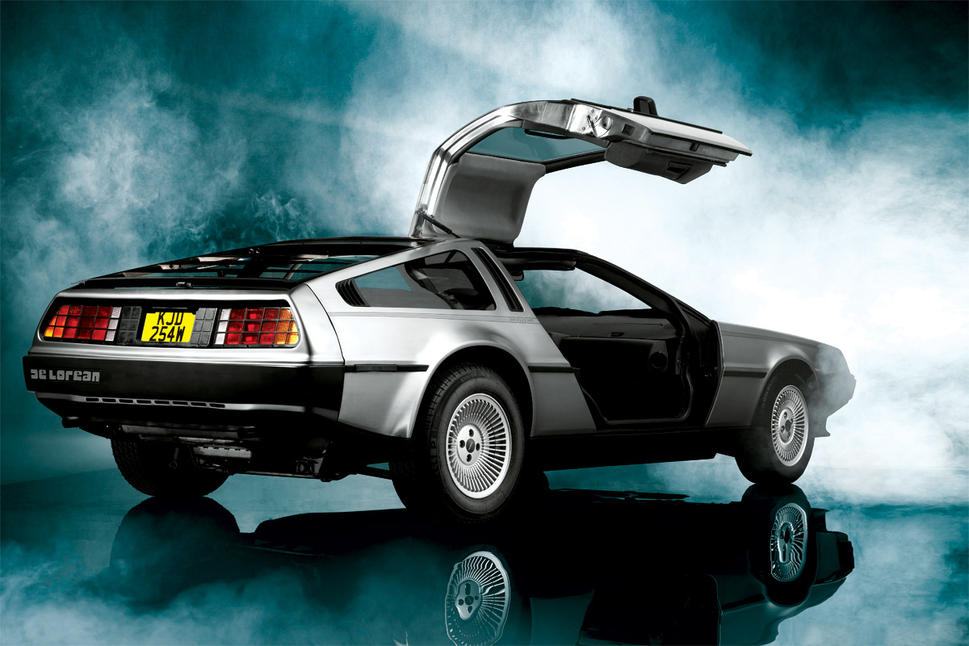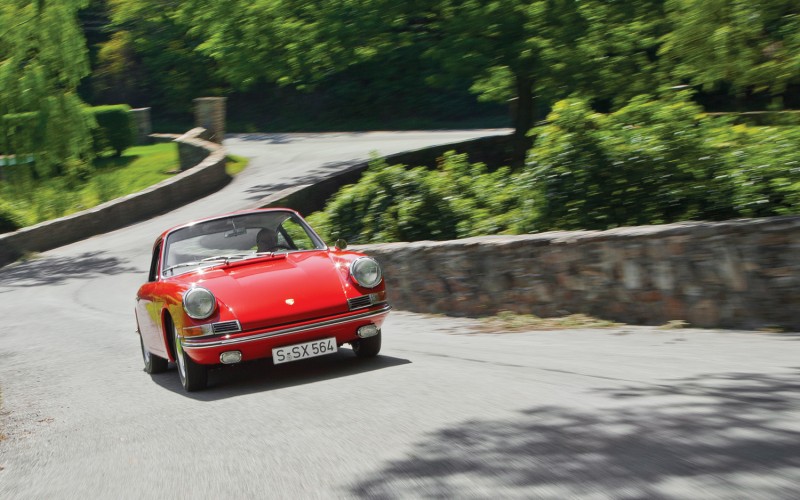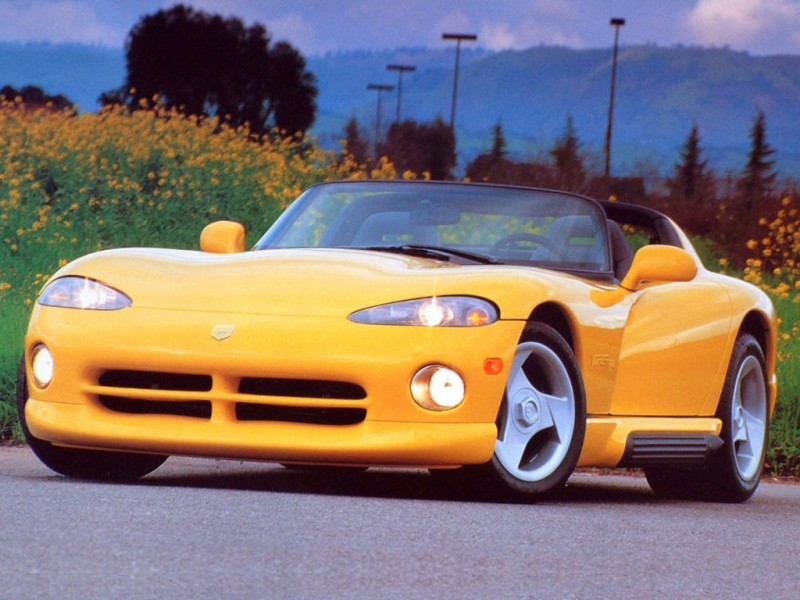The story of the DeLorean Motor Company is about quintessentially ’80s of a story as one could concoct. Actually, it is the kind of stuff that Hollywood dreams up. It involves a charismatic businessman, international travel, a sexy sports car, drug trafficking, and ultimately the FBI. Yes, the story is that enthralling, even if not for the car’s actual performance.
The Creator
It all began when John DeLorean was at the peak of his career working for General Motors in the 1970s. Delorean was instrumental in the creation of the Pontiac GTO and was the youngest vice president the company had seen. He was so successful that he was well on his way to becoming the youngest president of the company. Even more impressive was that he had all of this success despite constant clashes with management over his liberal, playboy lifestyle. DeLorean’s high-roller behavior involved him dating numerous fashion models, driving exotic European sports cars (while working at GM), and dressing in finely tailored suits. All of this was in stark contrast to the ultra-conservative corporate culture of 1970’s General Motors. However, in 1973, DeLorean unexpectedly quit General Motors and went on to ascertain the new aspirations he had by forming the DeLorean Motor Company in 1975.
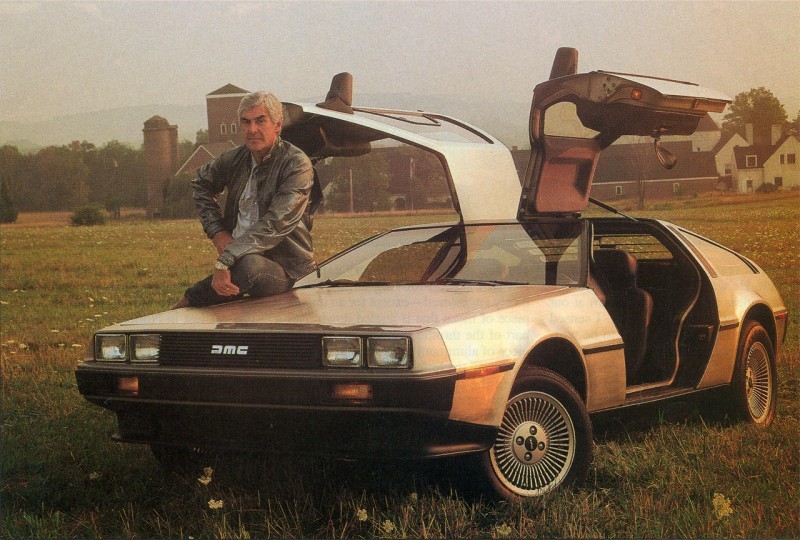
Photo: Entermyworld.com
A Prototype for the Press
By 1976, a prototype was ready to be presented to the public. The styling, done by famous Italian designer Giorgetto Giugiaro, drew headlines for its sleek lines and gullwing doors. The prototype car’s appearance was exactly like the final product, in 1981, but was far different mechanically. The prototype car was an amalgam of Fiat, Ford, and Citroen parts. The next year it was shown to the press, although they were barred from driving the car because of these parts not being finalized.
The most prolific feature of the DMC-12 was its bright stainless steel exterior. The car wore no paint but had this stainless steel exterior because painting the cars would have raised the cost outside of the niche that DeLorean hoped to fill.
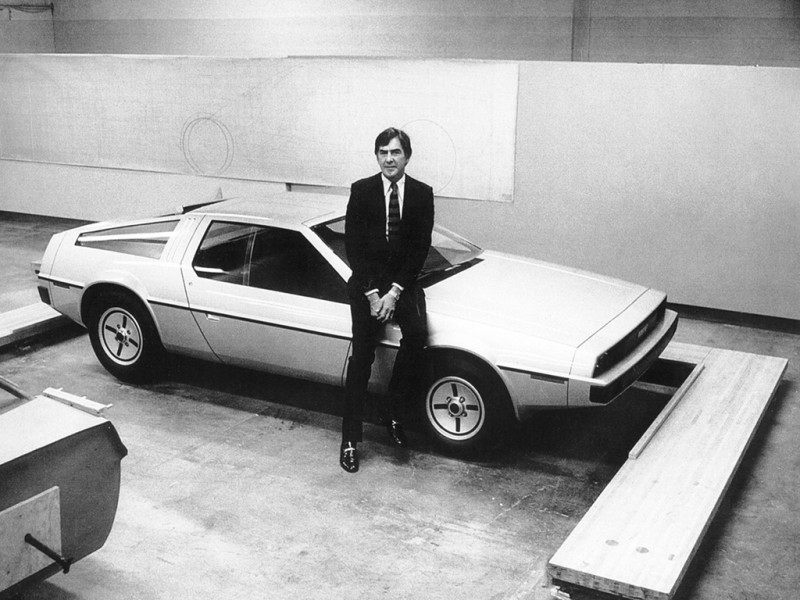
Photo: Carstyling.ru
A Power Struggle
One of the biggest changes that would be made was with the engine layout and sourcing. Although many engine options were considered (Ford V6, Citroen twin-rotary, Citroen inline-4), the car would ultimately come with a Renault-Peugeot-Volvo milled V6. Renault was overstocked with these motors, and that allowed DeLorean to strike a deal and save costs.
At 2.8 liters the V6 pumped out 130 hp, which was ample given the new emission sapping measures all cars in the U.S. were required to have. This new motor also mandated a switch from the proposed mid-engine layout to a rear-engine layout, requiring significant alterations. Under increased time constraints the DMC-12 took on more Renault parts (transmission and trans-axle) to cut costs by not having to create new pieces.
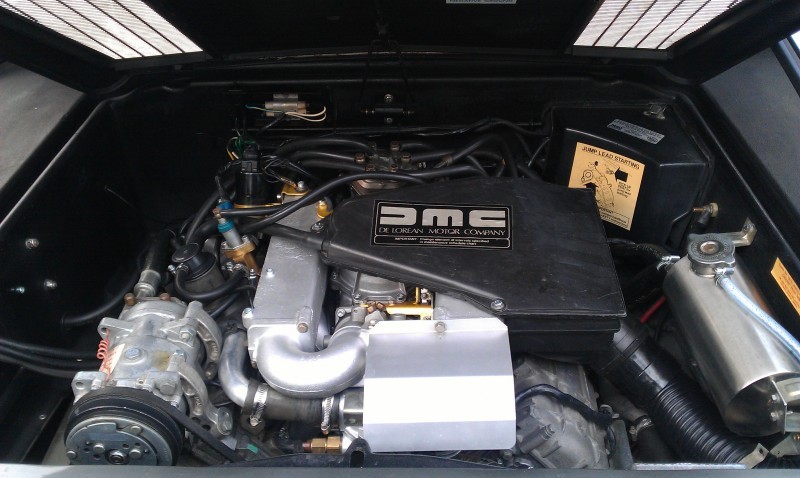
Photo: Wikimedia
Design Woes
In 1978, after suffering from delays and poor engineering caused by a Detroit-based engineering partner, DeLorean teamed up with Lotus’ Colin Chapman to help turn around the DMC-12 program. Lotus soon found it to be a daunting task as they struggled to work with the unique body paneling, weight gains, and trying to work around intended safety features like bumpers and airbags (both ultimately dropped). This contract coincided nicely with investment funding earlier that year from the English government. They would back the DeLorean startup in return for a new factory in Belfast, Ireland, hoping that job creation would undermine the growing civil war there.
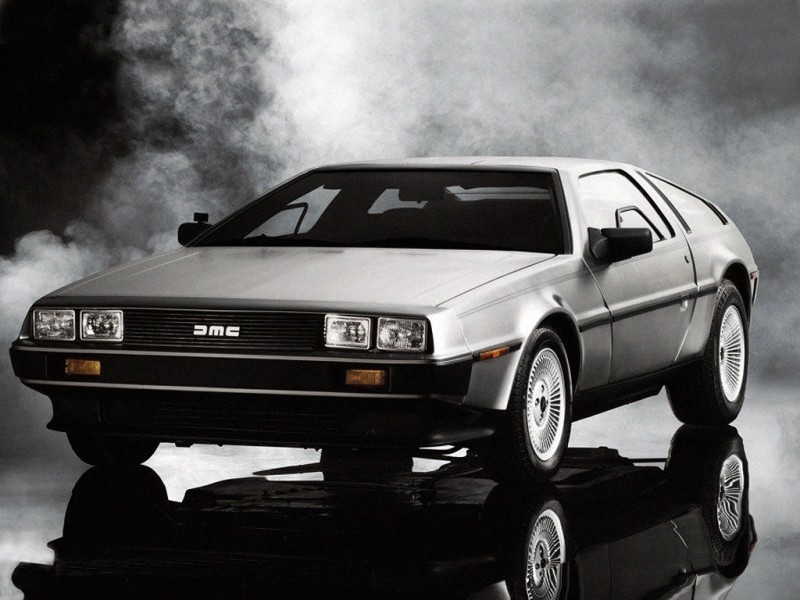
Photo: 3dTuning.com
Head to Production
The first cars rolled off the assembly line in 1981, and the performance of these early cars received mixed reviews. Large rear tires helped control oversteer from the rear-engine design but at-the-limits driving provoked erratic behavior. The straight-line performance also left buyers dissatisfied considering the sporty looks of their DMC-12. 0-60 times came in around 9.5 seconds, with a top speed that was realistically around 120 mph. This performance was not bad for the era but was not record-breaking, or even class-leading.
The biggest issues though were with the massive quality problems that plagued these first cars. Graciously overlooked by most media outlets the cars were notorious for suffering from the lack of pre-production testing and would all require expensive warranty rebuilds by DMC.
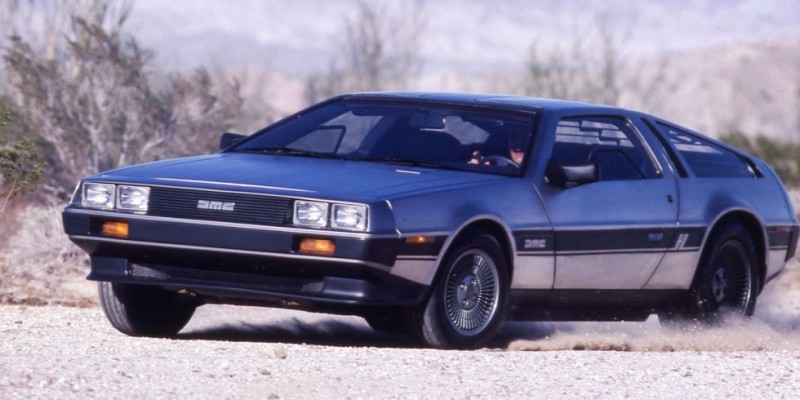
Photo: Road & Track
No Captain at the Helm
By the middle of 1981, despite production beginning, DMC was losing money at an unprecedented rate. DeLorean himself was more often seen traveling to various countries, courting new investors, or hosting lavish events in New York City that he was seen at the factory, overseeing work. The warranty claims due to shoddy workmanship, return royalties to the British government on their investment, and a high entry-level price all contributed to this hemorrhaging of funds. The death knell tolled in late 1981 though when the U.S. economy took a downward spiral with a severe winter cutting consumer spending.
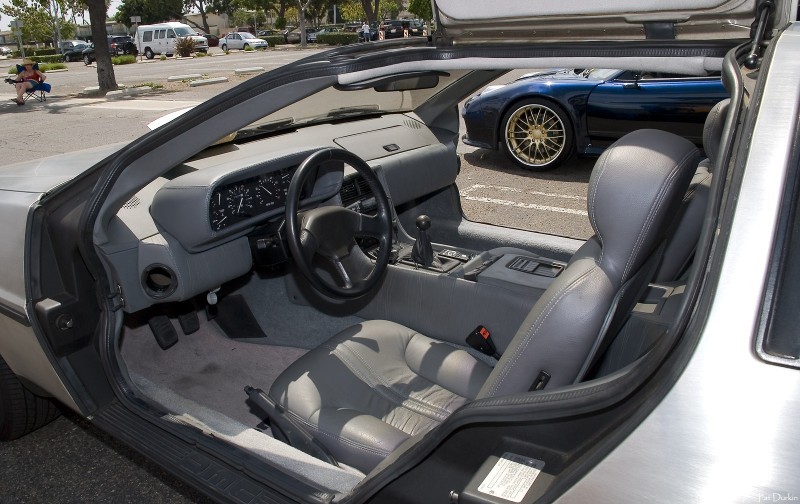
Minor Facelifts
During the next two years, the car was produced with no official facelifts made. Instead, there were a series of small, continuous improvements and styling alterations along the way. In 1981 the hood fueling door was relocated, but the hood still retained two vertical creases for styling. This change was done away with within 1983, replaced with an all-flat hood and a DeLorean badge in the corner.
Other changes, in late 1981, included a dead pedal, silver wheel paint, and sun visor design that were all slowly implemented. The biggest changes though were in 1982 when a new alternator that would not slowly drain power when all accessories were on was added, and a new radio head unit came standard.
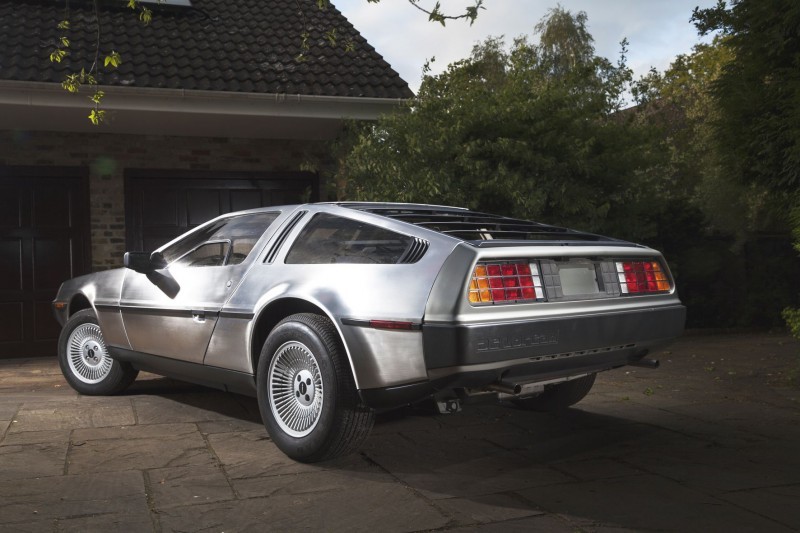
Government Take-Over
However, come February 1982 the English government intervened and took control of DMC due to their floundering financial status. With hopes of retaining his company, DeLorean offered a bid of $10 million to regain control. He then had plans to purchase the business outright through another significant investment.
Unfortunately for him, just before the date of the wire transfer John DeLorean was arrested in a Los Angeles hotel on conspiracy to traffic and bankroll $1.8 million in cocaine for eventual profits upwards of $24 million. Although he would successfully defend himself in court, by 1984 the DeLorean Motor Company had already fallen into bankruptcy and had closed its doors.
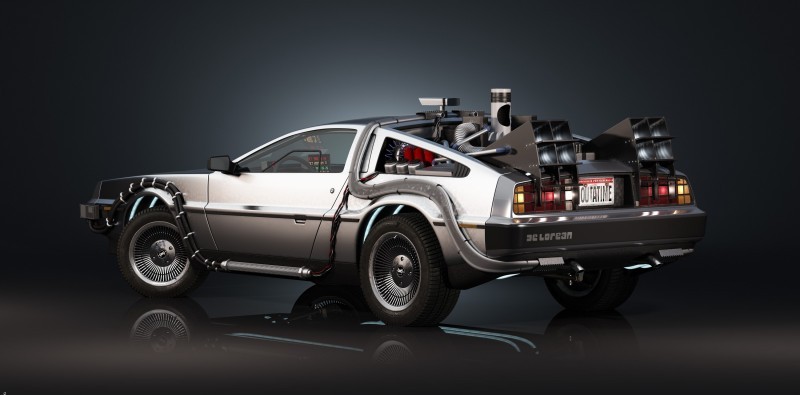
Photo: Talkaudi.co.uk
An Automotive Time Lord
By the end of 1983, almost 8,600 DMC-12’s had been made and sent out into the world. The real success story came in 1985 when the film Back to the Future used the DMC-12 for a hero car as a flying time machine. The film successfully re-birthed the failed sports car into a nostalgic movie icon, solidifying it in history.
Nevertheless, John DeLorean would not rebound from his failed business venture. He was plagued by legal troubles until his death in 2005, but the DMC-12 would live on thanks to the unique styling and a science fiction film success.
Specifications:
- Years – 1981-1983
- Layout – Rear-engine
- Drive – RWD
- Body Style – Coupe
- Seating – 2
- Motor – V6
- Displacement – 2.8 litre
- Power (hp) – 130
- Torque (lbs-ft) – 162
- Transmission – 5-speed manual / 3-speed automatic
- Wheelbase – 2,413 mm (95.0 in)
- Weight – 1,230 kg (2,712 lb)
- 0-60 mph – 9.5 seconds
- Quarter-mile – 18 seconds
- Top Speed – 120 mph

